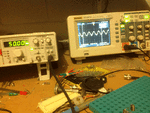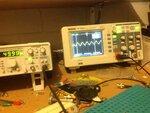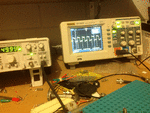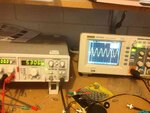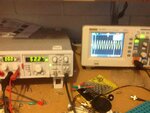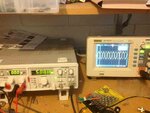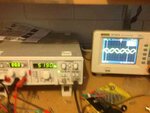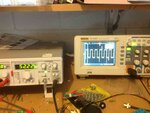Bucephalus
Newbie level 4
- Joined
- Apr 3, 2010
- Messages
- 7
- Helped
- 0
- Reputation
- 0
- Reaction score
- 0
- Trophy points
- 1,281
- Location
- Queensland, Australia
- Activity points
- 1,356
Hi there
I am just doing some basic tutorials so I can learn how to use the oscilloscope and signal generator.
When it's on sine and sawtooth waveforms the waveform is relatively neat. But when I have it on square wave, the form of the wave is distorted. I have attached photos of the three waveforms.
Also, I have also compensated the probe on the square wave gen on the front of the oscilloscope.
Please can any one explain to me why this is happening? Is it normal? Is there a way I can improve on this signal representation?
Please see attachments of photos.
regards
David.
I am just doing some basic tutorials so I can learn how to use the oscilloscope and signal generator.
When it's on sine and sawtooth waveforms the waveform is relatively neat. But when I have it on square wave, the form of the wave is distorted. I have attached photos of the three waveforms.
Also, I have also compensated the probe on the square wave gen on the front of the oscilloscope.
Please can any one explain to me why this is happening? Is it normal? Is there a way I can improve on this signal representation?
Please see attachments of photos.
regards
David.
